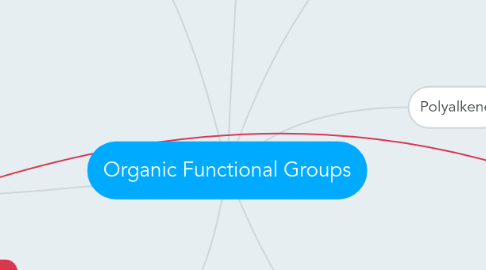
1. Alcohols
1.1. Reactions
1.1.1. Combustion
1.1.1.1. Alcohol + Oxygen → Water + Carbon Dioxide
1.1.2. Oxidation
1.1.2.1. Oxidise to Carboxylic Acid
1.2. Manufacturing Ethanol
1.2.1. Fermentation
1.2.2. Use of Ethanol
1.2.2.1. Alcoholic Beverage
1.2.2.2. Solvent
1.2.2.3. As a fuel
1.3. Physical Properties
1.3.1. Colourless
1.3.2. Flammable
2. Carboxylic Acids
2.1. Produced by oxidation of alcohols in oxygen or by acidified potassium dichromate (VI)
2.2. Reactions
2.2.1. Properties
2.2.1.1. Weak Acids
2.2.1.2. Completely miscible with water
2.2.2. Metals
2.2.2.1. Metal + Acid → Hydrogen + Salt
2.2.3. Carbonates
2.2.3.1. Acid + Carbonate → Carbon Dioxide + Salt
2.2.4. Alkali and insoluble bases
2.2.4.1. Acid + Base/Alkali → Water + Salt
3. Halogenoalkane
4. Alkanes
4.1. Chemical Reactions
4.1.1. Combustion
4.1.1.1. Complete = Production of Carbon dioxide and Water
4.1.1.2. Incomplete = Production of Carbon monoxide
4.1.2. Free Radical Substitution = halogens and UV light
4.1.2.1. Initiation: Cl2 molecules break in to two Cl radicals
4.1.2.2. Propagation: Cl radical bind with methane until no more hydrogen is available
4.1.2.3. Termination: Radicals form molecules
4.2. Other Properties
4.2.1. Functional C–C groups
4.2.2. Saturated compounds
4.2.3. Each member differs by next by a CH2 group
4.3. Physical Properties
4.3.1. Solubility
4.3.1.1. Insoluble in water
4.3.1.2. Soluble in organic solvents
4.3.2. The number of carbon increases,
4.3.2.1. Less volatile/flammable
4.3.2.2. More viscous
5. Alkenes
5.1. Chemical Reactions
5.1.1. Combustion
5.1.1.1. Complete = Production of Carbon dioxide and Water
5.1.1.2. Incomplete = Production of Carbon monoxide
5.1.2. Addition Reaction
5.1.2.1. Hydrogenation
5.1.2.1.1. Catalyst; Alkanes formed
5.1.2.2. Hydration
5.1.2.2.1. Alcohol
5.2. Other Properties
5.2.1. Functional group C=C
5.2.2. Saturated compounds
5.3. Physical Properties
5.3.1. More reactive than Alkanes due to the presence of double bonds
6. Hydrocarbons
6.1. Cracking
6.1.1. Alkanes
6.1.2. Alkenes
6.2. As molecules become bigger
6.2.1. Boiling points increase
6.2.2. Liquid burn less readily
6.2.3. Liquid more viscous
6.2.4. Liquid burn with smokier flame

